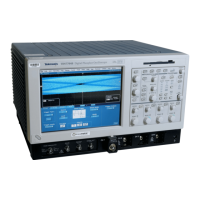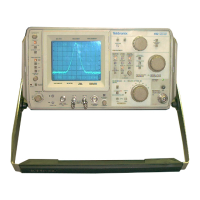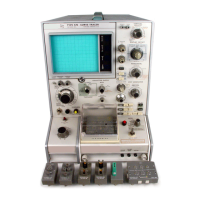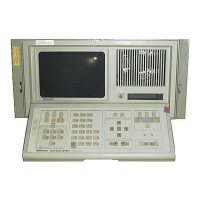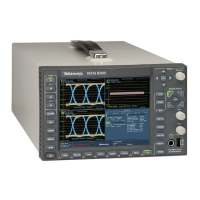Acquiring Waveforms
CSA7000B Series & TDS7000B Series Instruments User Manual
3-41
Measurements and histograms are done directly on the two dimensional array of
display pixels. In infinite persistence mode, the array accumulates more
information and measurements are more accurate.
Some modes/features are incompatible with Fast Acquisitions mode and if you
select them they will inhibit Fast Acquisitions:
H FastFrame and Zoom modes
H Envelope, Average, Waveform Database, Hi Res, and Single Acquisition
Sequence acquisition modes
H Interpolation (equivalent time sampling is used instead)
H Vectors when in equivalent time mode (waveforms are displayed using
Dots). To determine under what conditions the instrument normally
interpolates or uses equivalent time, see Equivalent-Time Sampling on
page 3--37.
H Math waveforms
H Measurements on channels when in Fast XY or XYZ
H Mask testing (optional on TDS7000B Series instruments)
If you select any of these modes before or while Fast Acquisitions is on, they
will inhibit, temporarily turn off, Fast Acquisitions mode.
Consider the mode that you want to use to acquire data:
Automatic Selection. Fast Acquisitions automatically selects record length and
sample rate to optimize the displayed image by optimizing live time and
minimizing dead time. Fast Acquisitions selects the sample rates and record
lengths and compresses them to 500 pixels to produce the maximum display
content.
Waveform Capture Rate. Figures 3--13 and 3--14 illustrate how Fast Acquisitions
mode differs from the normal acquisition mode used by digital storage instru-
ments. Note that normal mode follows a capture waveform-digitize waveform-
update waveform memory-display waveform cycle. Normal mode misses short
term events occurring during the long dead times. Typical waveform capture
rates are 50 waveforms per second.
Fast Acquisitions mode increases the waveform capture rate to up to 400,000
waveforms per second, updating the waveform array many times between
displays. This very fast capture rate greatly increases the probability that runts,
glitches, and other infrequent events will accumulate in waveform memory. The
instrument then displays the waveform at the normal display rate. You can
Using Fast Acquisitions
